This is the tense moment a TV presenter was seen taking deep breaths during a live broadcast as a 6.1 magnitude earthquake shook eastern Turkey and Syria.
Turjey’s Malatya province was shaken by Wednesday morning’s earthquake, with repercussions felt in the cities of Diyarbakir, Elazig and Malatya.
When one of the powerful tremors hit, an ERTV anchor was seen grabbing the table mid-news reading as the camera shook.
She said, ‘Oh my God, this is still going on,’ as she looked around the studio, holding her papers in place and breathing deeply.
When the violent vibrations came to an end, the presenter closed her eyes and continued her slow breathing technique.
A Turkish television presenter struggled to remain calm during a live broadcast as a 6.1 magnitude earthquake shook eastern Turkey and Syria.
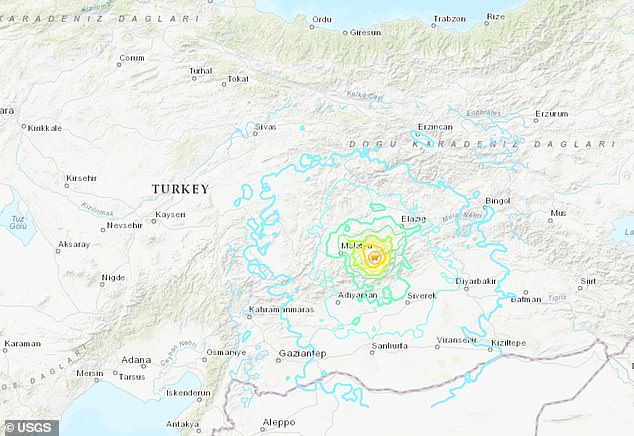
Interactive map from the United States Geological Survey (USGS) showing where the earthquake was felt in the Turkish province of Malatya
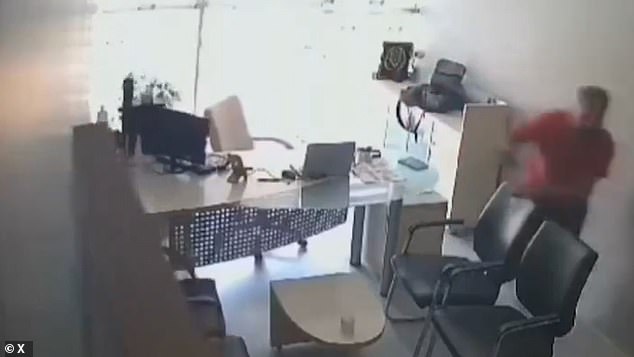
Footage shared with X showed a panicked Turkish citizen running out of a shaking office.
Following this morning’s earthquake, no casualties have yet been reported, but in Diyarbakir, people left their homes in panic, and Turkey’s Presidency of Emergency and Disaster Management added: “Our teams are on alert and emergency operations field scanning are in progress.
Syria’s state news agency says the earthquake was felt in the provinces of Hasakah, Deir Al Zor and Aleppo.
The European Mediterranean Seismological Center said the earthquake occurred at a depth of 5.6 miles underground.
AFAD took to X, formerly Twitter, after the first earthquake to post an update to panicked citizens.
It reported that a total of 374 notifications were made to the 112 emergency call center due to the earthquake and that four people had been rescued from a partially damaged building in Elazığ province.
However, a total of three buildings were damaged in Malatya, Şanlıurfa and Elazığ provinces, and a rockfall occurred in Pötürge and Kale districts of Malatya province.
Interior Minister Ali Yerlikaya confirmed in X that three buildings had “partially collapsed” in three different areas and that emergency services had received several dozen calls for help.
Images shared on social media captured office buildings and workspaces shaking, as people rush out of their rooms that appear on the brink of collapse.
Many waited in the streets and parks, reluctant to return home.
Local officials in Malatya also said there were “no negative developments” to report at this time, although the provincial governor said all primary and secondary schools would be closed for the day.
The USGS issued a green alert for quake-related deaths, indicating a low probability of casualties.
A yellow alert was issued for economic losses, indicating that some damage is possible and the impact should be relatively localized.
It comes after a devastating earthquake hit Türkiye and Syria last year, in the space of just 12 hours..
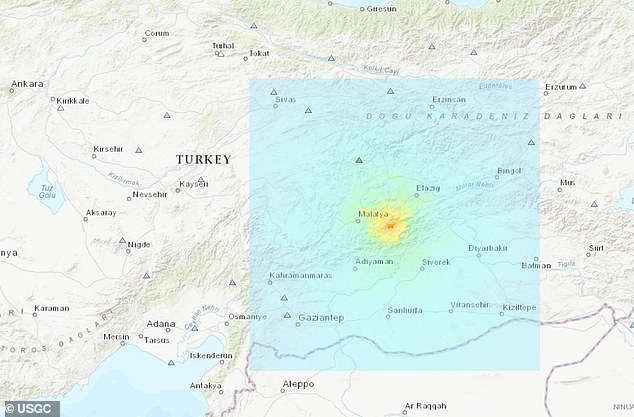
The USGC also uploaded a map showing the estimated intensity of the earthquakes.
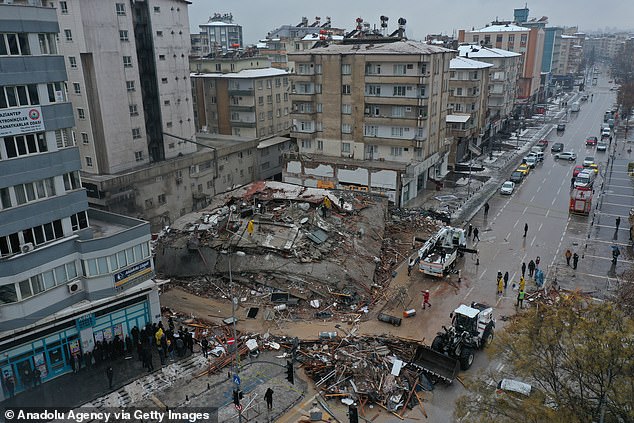
Pictured: Aerial view of a destroyed building in Gaziantep, southern Turkey, 2023. The earthquake, which could be the largest ever recorded in Turkey, was centered north of Gaziantep, Turkey, which is about 60 miles from the border with Syria and has a population of about 2 million
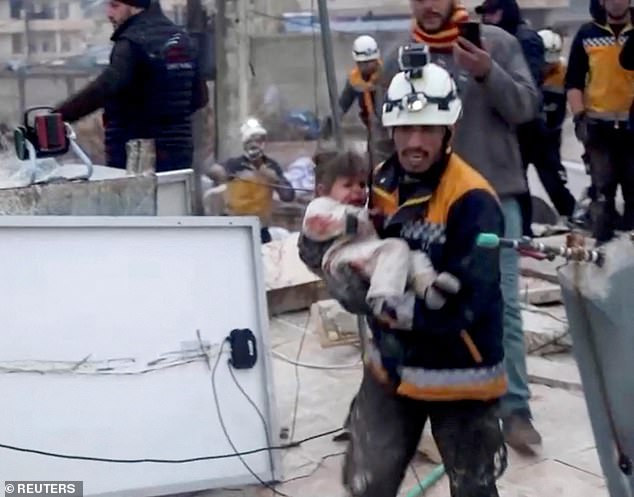
Pictured: A rescuer pulls an injured child from the rubble of a collapsed building in rebel-held Syria, following a deadly earthquake that hit Turkey and Syria in 2023.
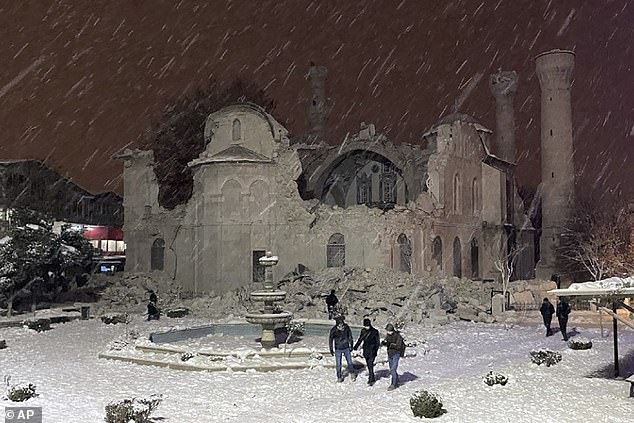
People walked past a mosque destroyed by an earthquake in Malatya in 2023
The first earthquake, with a magnitude of 7.8, struck southeastern Turkey, near the border with Syria, and the second occurred four kilometers from Ekinozu, in central Turkey.
It was the most devastating to hit Turkey in more than 20 years and was as strong as one in 1939, the most powerful recorded there.
It struck at 04:17 local time (01:17 GMT) at a depth of about 11 miles, the US Geological Survey said at the time.
A strong 6.7-magnitude aftershock struck about 10 minutes later, wreaking more havoc.
The Turkish agency itself said that 40 aftershocks were felt.
Turkey’s Emergency and Disaster Management agency said the earthquake killed dozens of people in seven Turkish provinces.
A few weeks later, on February 20, another large earthquake, measuring 6.3 million on the Richter scale, hit the region.
It is estimated that more than 55,000 people lost their lives in the earthquakes, while many more were injured and displaced.
This is breaking news. More to follow.


